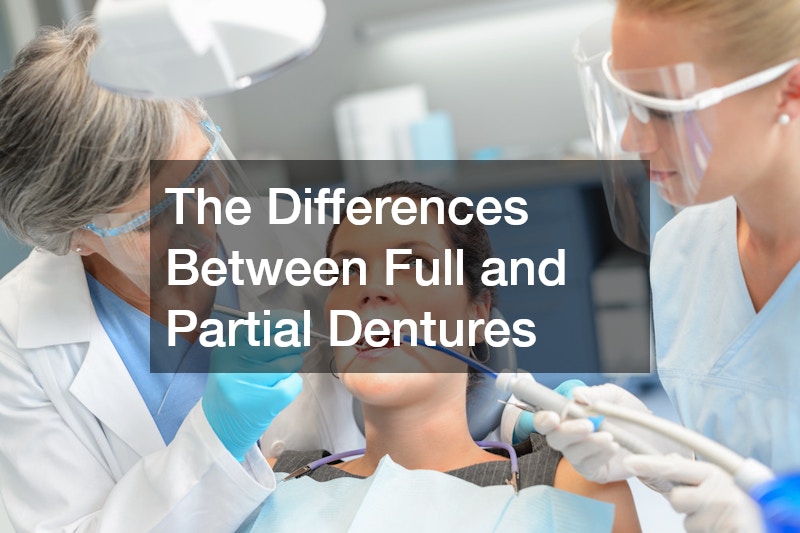Full and partial dentures serve the same purpose: replacing missing teeth. However, there are key differences between the two that affect how they function and the circumstances in which they’re used. Full dentures, also known as complete dentures, are used when all the teeth in either the upper or lower jaw are missing.
They consist of a full set of prosthetic teeth attached to a gum-colored base. These dentures rest directly on the gums and are custom-fitted to a patient’s mouth for maximum comfort and stability. Full dentures are commonly chosen by patients who have lost all of their teeth due to decay, injury, or aging.
Partial dentures, on the other hand, are designed for patients who still have some of their natural teeth. These dentures fill in gaps where teeth are missing, preventing surrounding teeth from shifting. A partial denture typically consists of replacement teeth attached to a gum-colored base, but it also includes metal or plastic clasps that attach to the remaining natural teeth to keep the denture securely in place. This design helps maintain the alignment of the remaining teeth and restores the function of the mouth for chewing and speaking.

The main difference between full and partial dentures lies in their application: full dentures replace an entire arch of teeth, while partial dentures are used when only a few teeth are missing. Both options require proper care and regular dental visits to maintain oral health, but the choice between full and partial dentures depends on how many natural teeth remain and the overall condition of the patient’s mouth.




